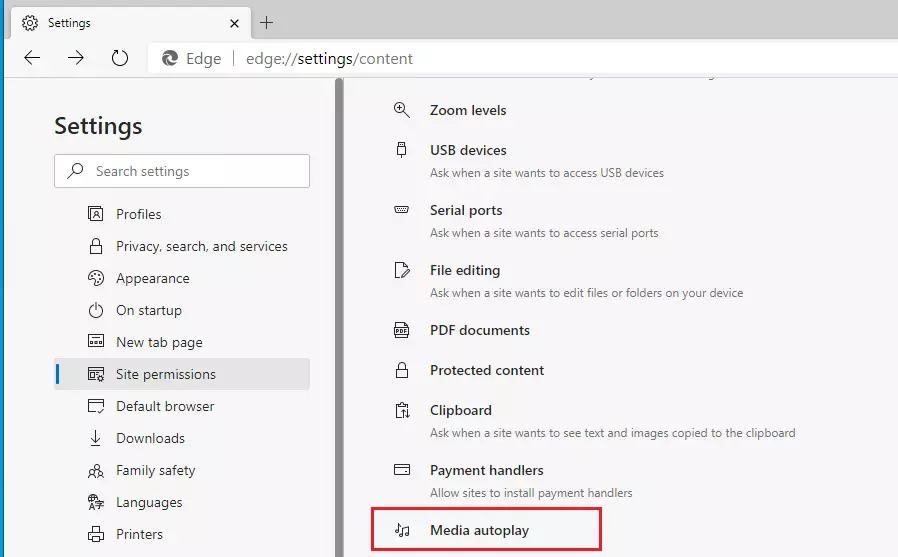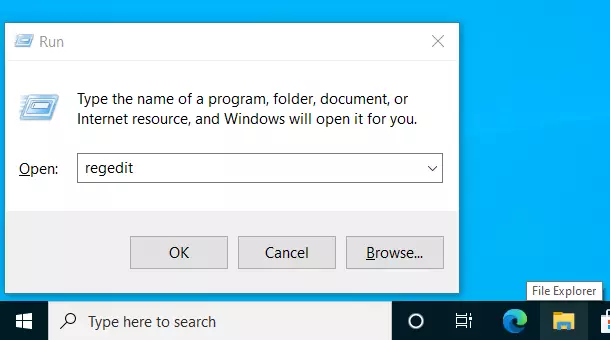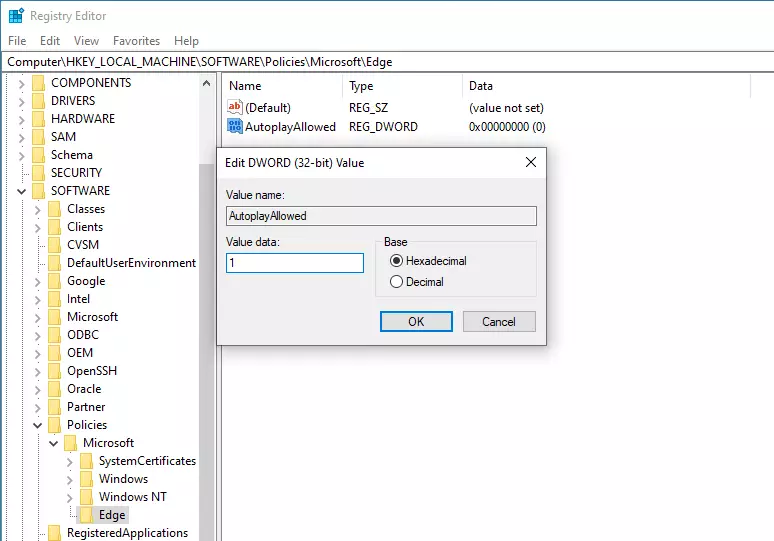This brief tutorial shows students and new users how to enable or disable the Media Autoplay feature in the Microsoft Edge browser.
The new Microsoft Edge browser has adopted the Chromium open-source project code base, offering better web compatibility and performance over the legacy Edge.
Edge browser is a cross-platform which supports all Windows, macOS, and Linux systems. If you’re using Microsoft Edge and want to learn how to disable its new Media autoplay feature, the steps below should show you how.
Microsoft Edge media autoplay feature is there to help improve your web browsing experience. Many websites automatically play media, including audio and videos, in the background when you browse these sites.
This cannot be very pleasant.
With the autoplay feature, you can choose to Allow, Block, or Limit audio and video to stop or play automatically on sites opened in new tabs in Microsoft Edge.
When set to Allow, all media will automatically play in the browser. When set to Block, media automatically set to play will be blocked. The limit will block based on what you blocked in the past.
To get started with disabling Media Autoplay, follow the steps below:
Disable Media Autoplay from flags
To be able to block media from auto-playing in the background automatically, you must first enable the block feature. To do that, open the Microsoft Edge browser and browse, copy, and paste the line below inside the address box.
edge://flags/#edge-autoplay-user-setting-block-option
If enabled, a block will appear as an option in media autoplay settings. From there, you can keep the default settings and enable or disable the feature.

Choosing Enabled will display a block on the settings page below.
Disable Autoplay from Settings
Another way to turn the Media autoplay feature on or off is from Edge’s setting page. To get there, open the Microsoft Edge browser, go to the three horizontal dots ( . ) at the top right corner of your screen, and select Settings.

When the Settings page opens, click Site Permissions on the left menu. To the right, choose Media autoplay.

From there, you’ll see the option to Allow or Limit. To see Block, enable it in the first step above.
Disable Media Autoplay from the registry
You can also enable the Media autoplay feature from the Windows registry.
You can also enable Edge Media autoplay via the Windows registry if logged in as an administrator. To do that, use the steps below:
Using the Windows registry is one way to force all users on the system to use Media autoplay. There are multiple ways to do this in Windows; however, using the Windows registry is the easiest and most effective way.
To enable, press the Windows Key + R on your keyboard to open the run command box. Or use the search function to search for the Run app.

In the command box, type the commands below and press Enter.
regedit
Then the registry opens; navigate to the path below.
HKEY_LOCAL_MACHINE\SOFTWARE\Policies\Microsoft\Edge
From there, right-click on the Edge key and select the New > DWORD (32-bit) Value option to create a REG_DWORD value if you don’t see the current AutoplayAllowed value already created.

Name the new DWORD value as
AutoplayAllowed
After saving the DWORD above, double-click it to open. Then enter the value of 1 to enable.

(delete) = Default
0 = Force disabled (Block)
1 = Force enabled[ (allow)
That should do it!
Conclusion:
- The Media Autoplay feature in Microsoft Edge allows users to control how media plays while browsing.
- Users can choose between Allow, Block, or Limit options for autoplay.
- Enabling or disabling autoplay can enhance the browsing experience by reducing unwanted noise and distractions.
- There are multiple methods to manage autoplay settings, including using flags, accessing settings, or modifying the Windows registry.
- Following the outlined steps ensures that users have full control over media playback in Edge, tailoring their experience to their preferences.

Leave a Reply